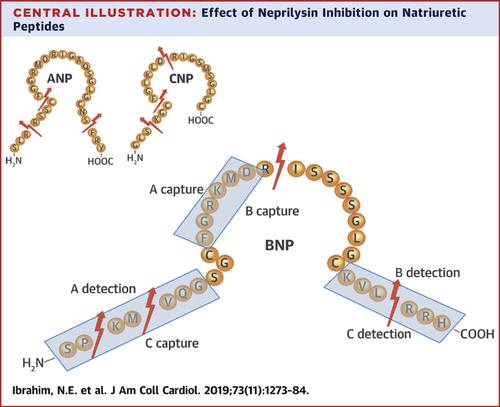
Day 5 on service at @MGHHeartHealth. No better time than now to think about the favorite drug of @AndrewJSauer...spironolactone.
The story of how the drug was discovered is interesting, and gave a hint as to the fact the drug would eventually become a pillar of HF care.
The story of how the drug was discovered is interesting, and gave a hint as to the fact the drug would eventually become a pillar of HF care.
The first mineralocorticoid synthesized was deoxycorticosterone (DOC). Simultaneously, aldosterone was discovered. Both exerted powerful sodium retention effects. This was in the early 1950s.
Simultaneously, people began to recognize that pts with HF retained salt and water...
Simultaneously, people began to recognize that pts with HF retained salt and water...
Recognizing that Na/water retention in HF resembled that of DOC/aldo treatment, efforts began on the synthesis of ways to block their effects with a family of compounds called 17-spironolactones.
one had potent anti-mineralocorticoid effects, and was dubbed "aldactone".
one had potent anti-mineralocorticoid effects, and was dubbed "aldactone".
But the use of spiro for HF took a back seat as the drug was mostly employed for aldosteronism, hypertension, PCOS, and other steroid-hormone mediated processes.
It wasn't until recognition that aldo causes myocardial/vascular fibrosis that spiro was explored in the RALES trial.
It wasn't until recognition that aldo causes myocardial/vascular fibrosis that spiro was explored in the RALES trial.
The results from RALES are likely well-known to many of you, but the trial was terminated early (with the issues that come with that) due to overwhelming efficacy, with a 30% reduction in death and 35% reduction in HF hospitalization. 

Of course, do not forget that similar benefits were seen with eplerenone in the EMPHASIS-HF trial of somewhat less severe HF. Recall that eplerenone is a more selective MRA, without gynecomastia when compared to spiro. 

So here are the things to remember clinically:
1. Both spiro and eplerenone are effective antihypertensives outside of HF, but they cause very little BP lowering in those with HF. Thus, together with SGLT2i, MRAs are important therapies to add even when the pressure is low.
1. Both spiro and eplerenone are effective antihypertensives outside of HF, but they cause very little BP lowering in those with HF. Thus, together with SGLT2i, MRAs are important therapies to add even when the pressure is low.
2. Both spiro and eplerenone may cause hyperkalemia. Everyone knows this. But how often should you monitor for it?
The recommended monitoring for potassium and creatinine is 1 week after initiation, monthly for the first 3M, quarterly for a year, and then every 6 months.
The recommended monitoring for potassium and creatinine is 1 week after initiation, monthly for the first 3M, quarterly for a year, and then every 6 months.
3. Your patient has hyperkalemia. What now?
First, do not over-react to a K of 5.5 ("elevated" in the MGH lab system). Though high, the risk from low K is actually greater.
But what should you do about it?
First, do not over-react to a K of 5.5 ("elevated" in the MGH lab system). Though high, the risk from low K is actually greater.
But what should you do about it?

First, I find it incredible how a simple intervention may make all the difference: review the foods your patient is eating. Providing a low K list of foods addresses about HALF of the cases that I see of hyperkalemia.
What about other meds to treat the K?
What about other meds to treat the K?
I will start with a low dose of a thiazide diuretic (being mindful about risk for hypotension; I lower loop diuretic when I do this), or I will turn to a potassium binder.
I DO NOT stop the spiro/eplerenone, nor do I lower other #GDMTworks.
I DO NOT stop the spiro/eplerenone, nor do I lower other #GDMTworks.
4. Can other #GDMTworks help to preserve use of MRAs? Yes! It was recently shown that use of SGLT2i lead to greater likelihood of persistence on MRA in the EMPEROR program owing to lowering of risk for hyperkalemia. This is from EMPEROR-Preserved: 

5. Sounds good...what's the down side?
First, spiro may cause gynecomastia, which may be uncomfortable and lead to resistance to taking it or alternatives. Education is critical. Gynecomastia may take months to reverse so early recognition and intervention is important.
First, spiro may cause gynecomastia, which may be uncomfortable and lead to resistance to taking it or alternatives. Education is critical. Gynecomastia may take months to reverse so early recognition and intervention is important.
Second, when optimizing GDMT it is not unusual to be able to reduce loop diuretics...good, right? Except loops promote kaluresis. So if you reduce/stop them, you must monitor K to avoid risk for hyperkalemia, which may emerge!
In the end, among the "four pillars" spironolactone/eplerenone are about as well tolerated as they come. If there was a way to more easily monitor K, this would likely ensure more use in HF. With emerging home K testing options, it will likely make that a reality.
#GDMTworks
#GDMTworks
• • •
Missing some Tweet in this thread? You can try to
force a refresh










